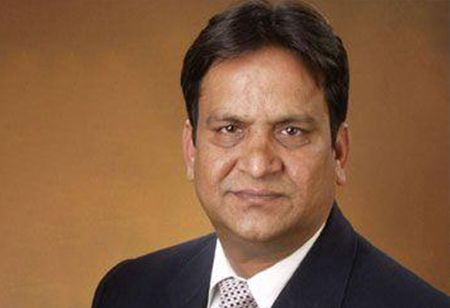K C Bansal, Chairman & Managing Director, DK Enterprises

In an interaction with Thiruamuthan, correspondent of India Pharma Outlook, K C Bansal, Chairman & Managing Director, DK Enterprises, shares the importance of Good Distribution Practices (GDP) in the smooth-running of pharmaceutical supply mechanisms in India. He addressed the operational challenges within the government schemes of dealing with infrastructure costs, veracity of power availability, and maintaining quality elements at the site. KC Bansal is a skillful professional with over 50 years of experience in warehousing and logistics. With expertise in operational management, strategy, and finance, he is able to move businesses through interactive market environments.
How are India’s Good Distribution Practices (GDP) evolving to ensure quality and safety across complex pharmaceutical supply chains? ?
The distribution was completely disregarded in this country. However, the time has come since distribution does not just imply taking the product and delivering to people in different locations. The significant section is how to maintain the product in warehouses - that is very important.
Good Distribution Practices (GDP) refers to the idea that goods should be stored under appropriate conditions; the warehouse should be clean, hygienic, and temperature-regulated. Keeping the temperature and pressure on track, as well as proper storage, all fall under GDP. The current distribution practices in India are in a highly primitive stage and now time has come that everybody should adopt and practice GDP standards.
What are the operational and ethical challenges faced by distributors under the government’s free medicine schemes??
The main challenge lies in the mindset. A lot of individuals are not ready to invest in storage, temperature controlled warehouses because the maintenance of air conditioning and cold chain warehouses, which are below 250 °C in temperature, involves capital. Also, companies lack sufficient margins to meet such challenges at distributors or stock points.
The other problem is the surface aspect of the checks by government agencies. The inspections should be sturdy and ensure the drug remains well stored and kept throughout transit between the origin and the endpoint. Another major issue is that of power failure in remote locations and therefore,?warehouses must have a backup power that works and will constantly check the temperature.
How has digital tracking and e-pharmacy integration impacted transparency and compliance in India’s drug distribution ecosystem?
Surveillance of temperature using data logs has become highly significant, though it should be done across all the fronts, starting from the company to the central warehouse, clearing and forwarding agents, depots, wholesalers and ultimately, retailers.
The retailer has the most crucial connection to who should provide adequate storage conditions, since in many stores, drugs are exposed to sunlight. The GDP framework should thus be carried out on the whole chain and not selectively.
Also Read: Infertility in India: Challenges and New Hope Ahead
To what extent does government intervention in the free medicine scheme influence private sector participation and pricing strategies??
The free drug program is very advantageous to the disadvantaged population, especially to the people who have never been treated before. The main problem however is how to maintain the quality of drugs distributed under this scheme.
The L1 system of bidding currently in place whereby the lowest bidder is prioritized leads to a compromise on quality. The government has to pay attention not only to L1 (lowest price) but also to Q1 (best quality). Poor quality of goods is also another problem where manufacturers bid with poor quality goods and the end product may have poor quality packaging and low shelf life.
It is paramount to maintain the quality standards and the cost efficiency to make this scheme successful.
What policy reforms or public-private collaborations could strengthen last-mile drug delivery without compromising distribution integrity or accountability?
Public-Private Partnership (PPP) models are significant in healthcare infrastructure, particularly in the diagnostics of X-rays, magnetic resonance imaging, and dialysis services which the government hospitals do not have adequate resources. Nonetheless, PPP models are not very relevant in the case of drug distribution.
The government or its officials have to contract medicines directly with the manufacturers and supply the population with them without any fee. Thus, PPP is diagnostics and support services, though it does not play a major role in the drug distribution process.
Also Read: Bridging Collaboration Gaps to Boost India's Pharma Discovery
What is your future outlook? Also, please share a piece of advice given to your experience.??
The future of this industry is extremely promising. India is positively striding to become a leader in pharmaceuticals at the global front with excellent manufacturing capabilities and high exportation potential. Nevertheless, the business should not cut corners when it comes to ethics and distribution integrity.
Good Distribution Practices are also important, like drug manufacturing itself. The quality of a given drug is no use in production, when it is not stored or distributed appropriately. I will advise entrepreneurs and industry leaders to embrace GDP strictly.
The future will be more demanding in terms of compliance and the schedules of regulations will also be stricter in the future. All stakeholders must upgrade their systems and comply with these changing standards to guarantee long term growth and acceptability in the global market.